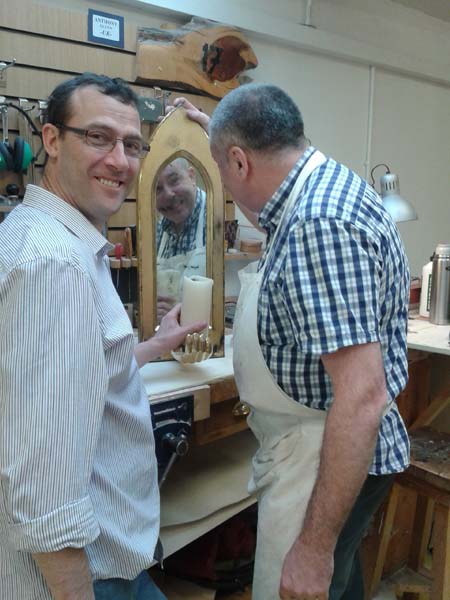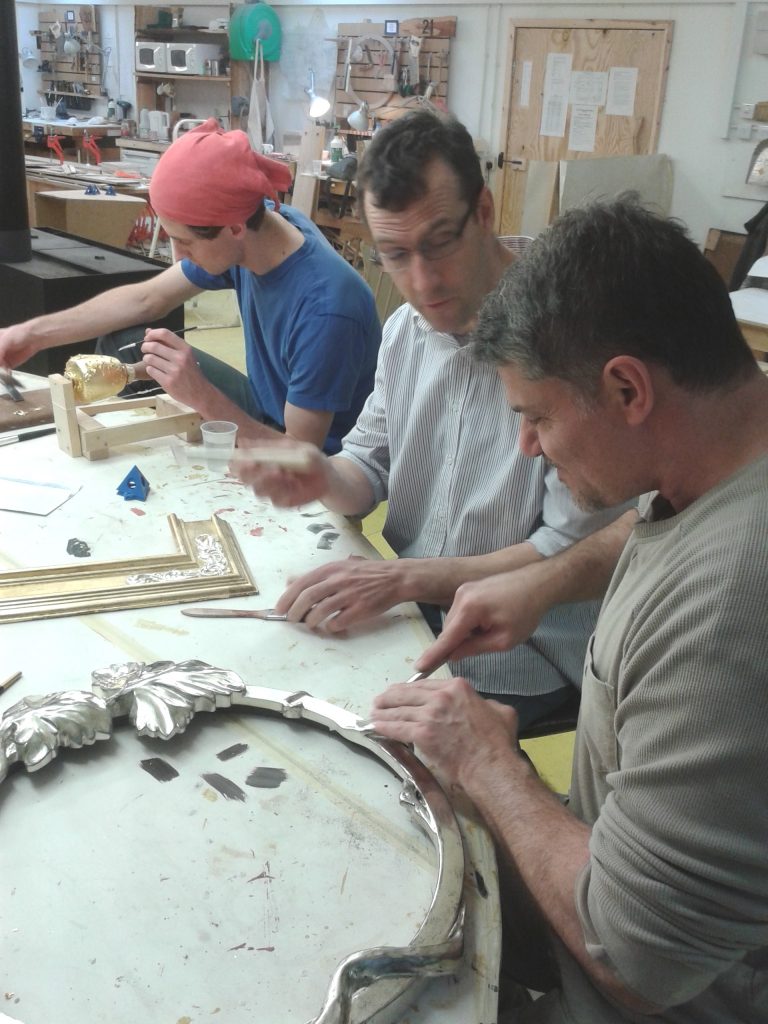Richard Walker, owner of Watergild Studios in Portsmouth, Hampshire, works as a freelance master gilder on private commissions as well as teaching the art of gilding at a variety of locations across the UK and online. For the last two weeks, Richard has been teaching a gilding course to students at the Chippendale School of Furniture.
Richard loves “the sense of community at the Chippendale School” and “Anselm Fraser’s relaxed and caring style of teaching”. He describes the Furniture School as managing “not to separate home from school, and where feeling relaxed and comfortable is all part of the same deal”.
While at the Chippendale School, Richard has been teaching all the techniques involved in gilding, removing all the mystery surrounding this ancient art. Under Richard’s supervision, the students have been incorporating their newly-learned gilding skills into their own finished projects such as ornately-carved traditional or contemporary wooden sculptures or mirror frames.
The history of gilding is indeed an ancient one, dating back some 4,500 years to the Egyptians who used gold leaf to decorate wood and metal, often for the tombs of the pharaohs. The art of gilding was adopted by the Greeks and Romans, and also travelled to China. One of the seven wonders of the ancient world was the 12-metre gilded Statue of Zeus at Olympia.
Today, gilding is still used in a variety of ways, most commonly for picture frames or furniture – although it is also found in art, interior design and book-binding – and, because gold leaf is edible, even in food! (A Valentine’s Day meal this year, advertised at a whopping £61,000 includes some £2,000 of gold leaf!).
It is an art that Richard believes should be preserved, and that the Chippendale School teaches every year.
Students at the school range from school leavers and graduates to the newly-retired and Richard notes that “… during this intense nine months of training, the students all succeed in learning a wealth of skills so that I have found myself asking them about what they’ve learned at Chippendale!”

Richard describes the Chippendale International School of Furniture as very different from other schools he has taught at, mainly in the way students are really encouraged to be expressive and creative, whil being supported throughout every process.
Richard is also impressed by the wonderful variety of both the traditional and contemporary pieces students have created: “I love the way the school encourages individuality, flair and creativity, while simultaneously addressing the important issue of each student’s plans for life after the course has finished.
“The school is particularly good at taking the time to encourage each student to discuss and give advice on their plans and ideas for the future. There is a relaxed, welcoming atmosphere here, and the students all mix well, irrespective of age, with them drawing strength from each other, the old becoming young and the young becoming wise!”
Richard is delighted to have taught at The Chippendale International School of Furniture. “The ancient art of gilding may have a history stretching back 4,500 years, but it’s only because of furniture schools like this that gilding will have a secure future.”
